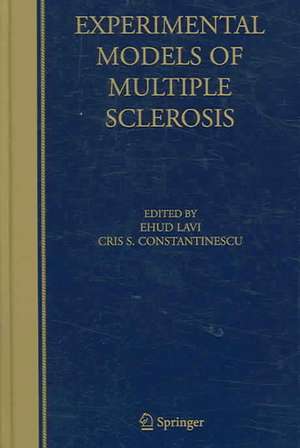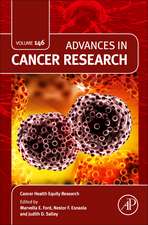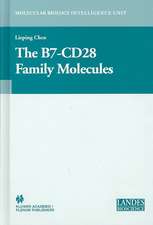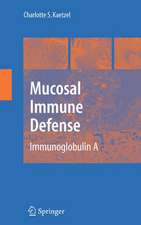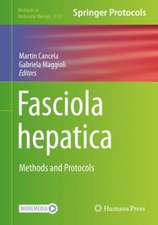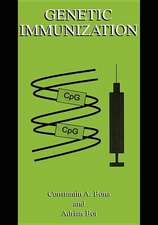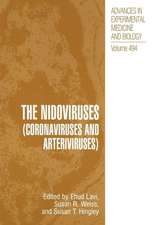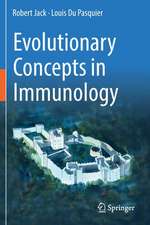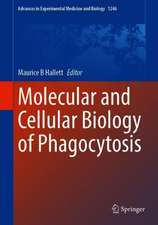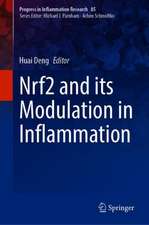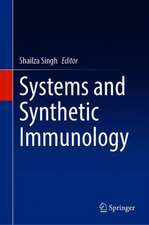Experimental Models of Multiple Sclerosis
Editat de Ehud Lavi, Cris S. Constantinescuen Limba Engleză Hardback – 28 noi 2005
Preț: 1449.19 lei
Preț vechi: 1525.46 lei
-5% Nou
Puncte Express: 2174
Preț estimativ în valută:
277.29€ • 289.55$ • 228.98£
277.29€ • 289.55$ • 228.98£
Carte tipărită la comandă
Livrare economică 15-29 aprilie
Preluare comenzi: 021 569.72.76
Specificații
ISBN-13: 9780387255170
ISBN-10: 0387255176
Pagini: 902
Ilustrații: XIV, 902 p.
Dimensiuni: 155 x 235 x 49 mm
Greutate: 1.4 kg
Ediția:2005
Editura: Springer Us
Colecția Springer
Locul publicării:New York, NY, United States
ISBN-10: 0387255176
Pagini: 902
Ilustrații: XIV, 902 p.
Dimensiuni: 155 x 235 x 49 mm
Greutate: 1.4 kg
Ediția:2005
Editura: Springer Us
Colecția Springer
Locul publicării:New York, NY, United States
Public țintă
ResearchDescriere
Multiple Sclerosis (MS) is an enigmatic immune mediated disease of the central nervous system that affects about 350,000 individuals in the US, and many more around the world. The mechanism of this disease is largely unknown and there is no cure for it. However, there are several well-characterized experimental animal models that help us understand and speculate about potential mechanisms of pathology in this disease. Many of the experimental therapies designed for this disease rely on testing the drugs in animal models before using it in clinical trials. This book combines for the first time the different experimental models for MS (including immune-mediated and viral) under one roof, and highlights aspects that are different or shared among these experimental models. It’s aim is to improve our understanding of this devastating disease and help us think about potential additional therapies for it.
Cuprins
Preface by Ehud Lavi and Cris S. Constantinescu PART A - EXPERIMENTAL ALLERGIC (AUTOIMMUNE) ENCEPHALOMYELITIS (EAE): EAE: history, clinical signs, and disease course.- Induction of EAE.- Histopathology of EAE.- Neuroantigens in EAE: Myelin genes, proteins, and non-protein antigens.- Adjuvants in EAE.- The role of astrocytes in autoimmune disease of the central nervous system.- Role of microglia and macrophages in EAE.- The Neuron and axon in EAE.- Endothelial cells and adhesion molecules in EAE.- Genetics of EAE.- T lymphocytes in EAE: Insights into the development and control of the autoreactive T cell.- The role of complement in EAE.- B cells and antibodies in EAE.- Cytokines in EAE.- The role of interferons in EAE.- The role of growth factors in EAE.- The chemokine system in EAE.- Free radicals and EAE.- Proteases and peptidases in EAE.- The blood-brain-barrier in EAE.- Immunomodulation in EAE: altered peptide ligands, tolerance, and Th1/Th2.- The role of costimulation in EAE.- Epitope spreading in EAE.- Apoptotic cell death in EAE: apoptosis of effector cells as a safe mechanism in the termination of an autoimmune inflammatory attack.- Environmental influences in EAE.- Hormonal and gender influences on EAE.- EAE in primates.- PART B - THEILER’S MURINE ENCEPHALOMYELITIS VIRUS (TMEV)- INDUCED DEMYELINATION: Histopathology in the Theiler’s virus model of demyelination.- TMEV and neuroantigens: myelin genes and proteins, molecular mimicry, epitope spreading, and autoantibody-mediated remyelination.- The role of astrocytes, ligodendrocytes, microglia and endothelial cells in TMEV infection.- Immunogenetics, resistance, and susceptibility to Theiler’s virus infection.- The role of T cells and the innate immune system in Theiler’s virus demyelinating disease.- Cytokines, chemokines and adhesion molecules in TMEV-IDD.- Molecular determinants of TMEV pathogenesis.- Nitric oxide in TMEV.- Theiler’s murine encephalomyelitis virus(TMEV)-induced demyelination: apoptosis in TMEV infection.- PART C - CORONA VIRUS-INDUCED DEMYELINATION: Histopathology in coronavirus-induced demyelination.- The role of astrocytes, microglia, and endothelial cells in coronavirus-induced demyelination: induction of cytokines and other signaling mechanisms.- Axons and neurons in coronavirus-indued demyelination.- The role of T cells in corona-virus induced demyelination.- The role of humoral immunity in mouse hepatitis virus induced demyelination. The role of T cell epitopes in coronavirus infection.- Coronaviruses and neuroantigens: myelin proteins, myelin genes.- Coronavirus-induced demyelination and remyelination: growth factor expression and function.- Chemokines in coronavirus-induced demyelination.- Coronavirus receptors.- Apoptosis in MHV-induced demyelination.- The role of metalloproteinases in corona virus infection.- Molecular determinants in coronavirus MHV-induced demyelination.- PART D - DEMYELINATION INDUCED BY OTHER VIRUSES: Semliki Forest Virus-induced demyelination.- The pathogenesis of canine distemper virus induced demyelination: a biphasic process.
Recenzii
From the reviews:
"A specialist book that aims to combine and present information about every existing animal model for multiple sclerosis. The target audience for this book includes neuroscientists, neurologists, immunologists, microbiologists, and neuropathologists. Clearly, some neuroradiologists … will also benefit from the information in this book. For the readers of AJNR, it is thought that a primary use of this book might be a reference for those collaborating with basic neuroscientists. … This will be a valuable resource for any scientists … ." (American Journal of Neuroradiology, January, 2007)
"A specialist book that aims to combine and present information about every existing animal model for multiple sclerosis. The target audience for this book includes neuroscientists, neurologists, immunologists, microbiologists, and neuropathologists. Clearly, some neuroradiologists … will also benefit from the information in this book. For the readers of AJNR, it is thought that a primary use of this book might be a reference for those collaborating with basic neuroscientists. … This will be a valuable resource for any scientists … ." (American Journal of Neuroradiology, January, 2007)
Textul de pe ultima copertă
Multiple Sclerosis (MS) is an enigmatic immune mediated disease of the central nervous system that affects about 350,000 individuals in the US, and many more around the world. The mechanism of this disease is largely unknown and there is no cure for it. However, there are several well-characterized experimental animal models that help us understand and speculate about potential mechanisms of pathology in this disease. Many of the experimental therapies designed for this disease rely on testing the drugs in animal models before using it in clinical trials. This book combines for the first time the different experimental models for MS (including immune-mediated and viral) under one roof, and highlights aspects that are different or shared among these experimental models. It’s aim is to improve our understanding of this devastating disease and help us think about potential additional therapies for it.
Experimental Models of Multiple Sclerosis will be an important reference for neuroscientists, neurologists, immunologists, microbiologists (especially virologists) and pathologists (especially neuropathologists). Health professionals involved with MS, and medical students will also benefit from this book.
Experimental Models of Multiple Sclerosis will be an important reference for neuroscientists, neurologists, immunologists, microbiologists (especially virologists) and pathologists (especially neuropathologists). Health professionals involved with MS, and medical students will also benefit from this book.
Caracteristici
This is the only title on experimental models of multiple sclerosis
